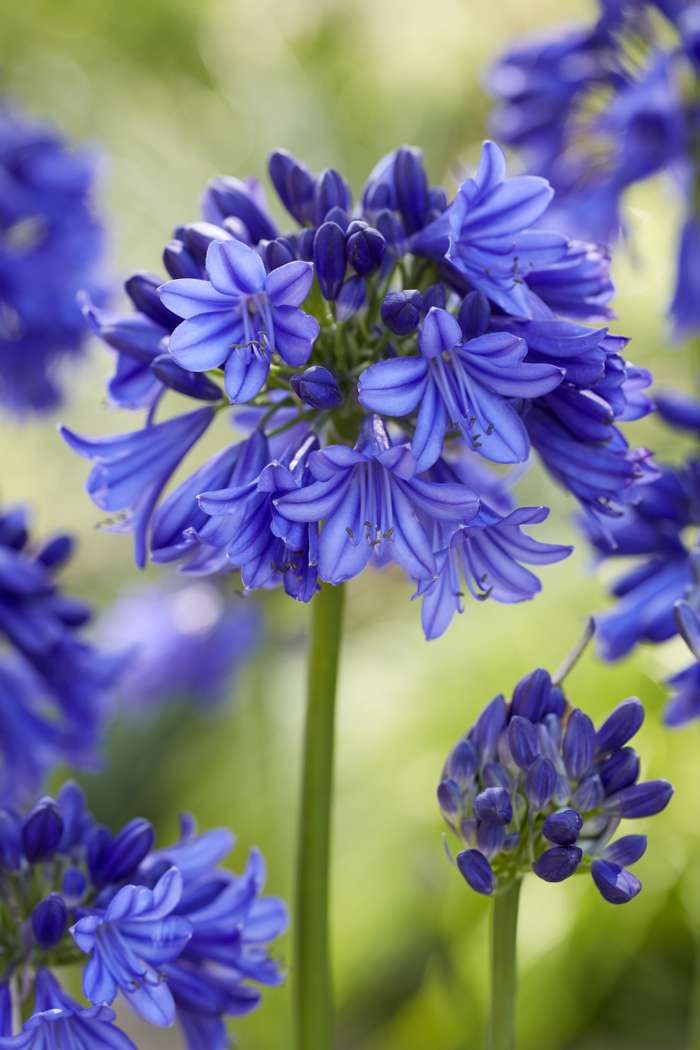Agapanthus Proliferation: Tips for Expanding Your Plant Collection
Agapanthus Proliferation: Tips for Expanding Your Plant Collection
Blog Article
Grasping the Art of Agapanthus Treatment: Necessary Actions for Healthy And Balanced Development and Lively Flowers
In the world of horticulture, the cultivation of agapanthus stands as a fulfilling undertaking for those who look for to support these classy flowering plants. With their striking blossoms and graceful vegetation, agapanthus has recorded the focus of gardeners worldwide. Nonetheless, achieving optimal development and vivid blossoms requires a nuanced technique that encompasses various crucial steps. From picking the ideal range to understanding pruning methods, the journey in the direction of growing prospering agapanthus plants is complex and holds the essential to opening the full possibility of these botanical gems.

Picking the Right Agapanthus Range

When picking the appropriate Agapanthus selection for your garden, take into consideration aspects such as climate suitability, flower color, and development behavior. Furthermore, think about the environment in your region to make certain the Agapanthus range you select can thrive in your specific conditions. Recognizing the development practice of various Agapanthus selections is crucial for correct positioning within your yard.
Perfect Growing Conditions
Thinking about the ideal ecological requirements is vital for effective Agapanthus growing. Agapanthus plants are sensitive to chilly temperature levels and ought to be safeguarded from frost during winter months.
To guarantee healthy growth and vivid blooms, plant Agapanthus light bulbs at a deepness of regarding 2-4 inches and space them 8-12 inches apart. Adding raw material, such as compost, to the soil can enhance drainage and fertility, promoting robust origin advancement. Mulching around the base of the plants helps keep dampness and subdues weed growth. Normal watering is essential, specifically during the expanding season, to maintain the soil continually damp however not soaked.
Watering and Feeding Tips
Maintaining appropriate dampness degrees and supplying crucial nutrients are vital components in the care program for Agapanthus plants. When it comes to watering Agapanthus, it is vital to strike an equilibrium. These plants favor constantly damp soil yet are at risk to root rot if overwatered.
Feeding Agapanthus is crucial for advertising healthy development and prolific blooms. Apply a balanced fertilizer, such as a 10-10-10 formula, in the very early springtime as brand-new growth emerges. By adhering to these watering and fertilizing suggestions, you can guarantee your Agapanthus plants thrive and produce lively, resilient blossoms.
Trimming Techniques for Agapanthus
Trimming Agapanthus plants at the suitable times and with proper techniques is crucial for keeping their health and wellness and promoting optimum growth and blooming. The excellent time to prune Agapanthus is in late winter season or early spring before brand-new growth emerges.
For flowered stems, wait until the blooms have actually perished and after that trim them back to the base. This not only cleans the plant's appearance however likewise urges the advancement of new flower buds. Deadheading invested flowers can likewise reroute the plant's energy into creating even more blooms instead than setting seeds. Nevertheless, if you wish to collect seeds for proliferation, leave some blossoms to fully grown and completely dry on the plant.
Remember to make use of tidy, sharp devices to make exact cuts and minimize the danger of presenting illness. Agapanthus. Normal pruning will aid keep your Agapanthus looking healthy and cool while making certain an abundant display of lovely blooms
Dealing With Typical Insects and Conditions
After ensuring proper trimming techniques her latest blog for Agapanthus, it is necessary to deal with usual parasites and diseases that can influence the wellness and vigor of these plants. One typical pest that affects Agapanthus is the Agapanthus gall midget.
Additionally, Agapanthus plants can experience from origin rot if they are planted in inadequately draining soil. By being cautious and taking punctual action versus pests and diseases, you can assist your Agapanthus plants grow and create lively blossoms. Agapanthus.

Final Thought
In verdict, mastering the art of agapanthus care involves selecting the best selection, providing perfect planting conditions, appropriate watering and fertilizing, appropriate trimming strategies, and attending to typical parasites and conditions. By adhering to these necessary steps, you can ensure healthy and balanced development and lively blooms for your agapanthus plants. Keep in mind to on a regular basis monitor and maintain your plants to promote their informative post overall well-being and longevity.
To ensure healthy development and vivid blooms, plant Agapanthus other light bulbs at a deepness of about 2-4 inches and room them 8-12 inches apart. By adhering to these watering and fertilizing tips, you can ensure your Agapanthus plants flourish and produce vibrant, lasting blooms.
One usual insect that affects Agapanthus is the Agapanthus gall midget. In addition, Agapanthus plants can experience from root rot if they are planted in poorly draining pipes dirt. By complying with these crucial steps, you can make sure healthy and balanced growth and vibrant blossoms for your agapanthus plants.
Report this page